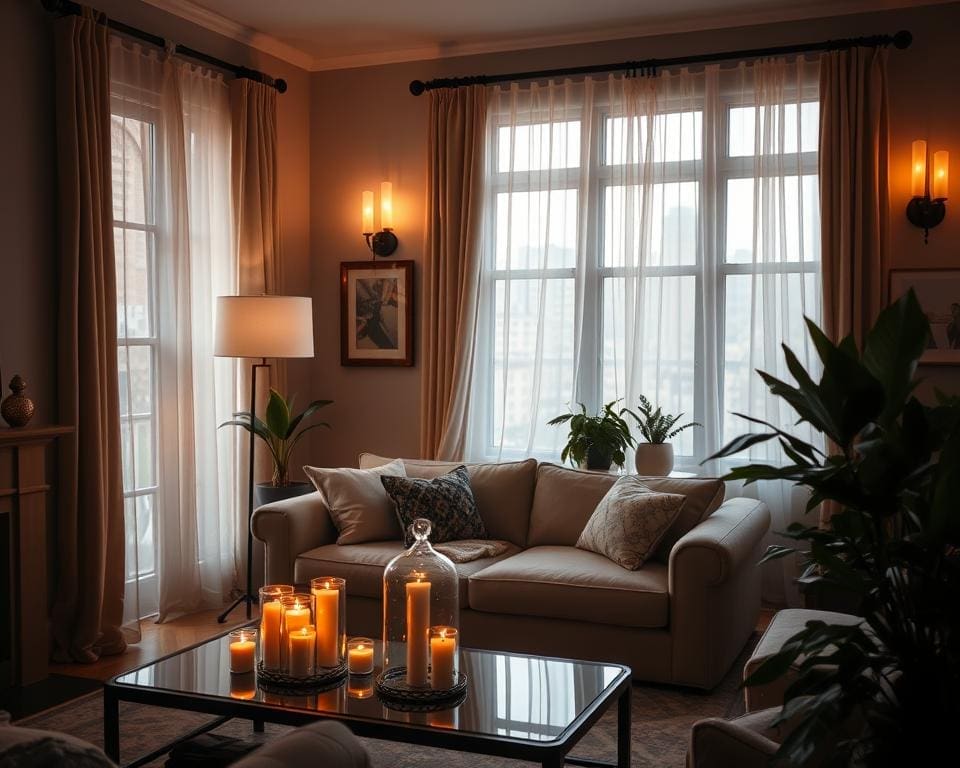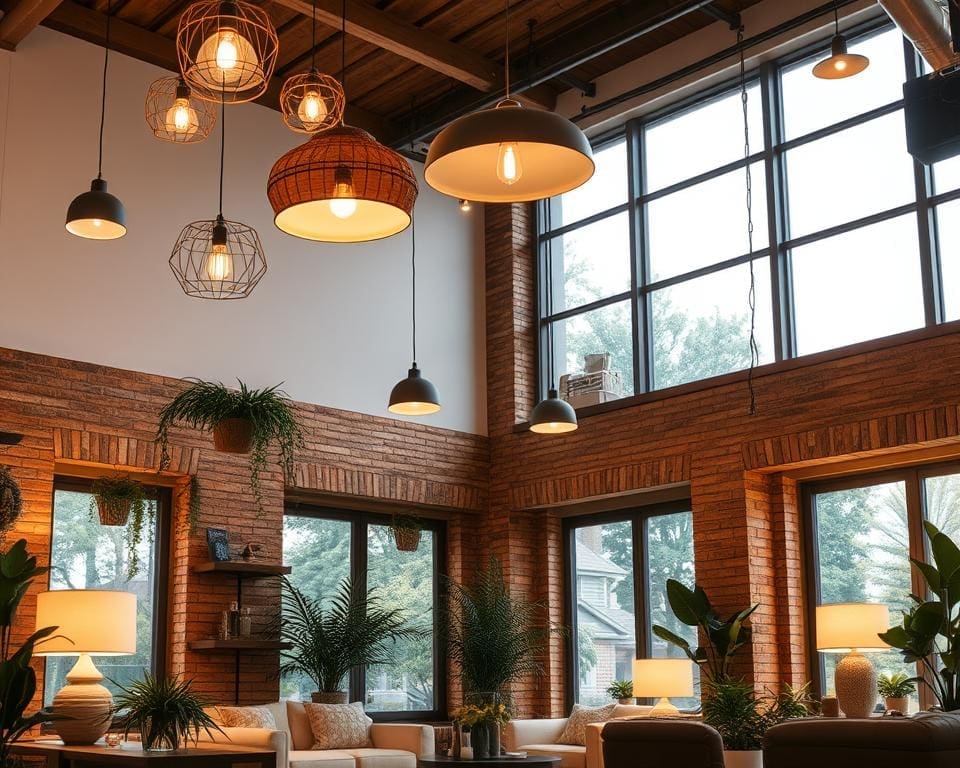Creating the perfect home environment hinges on effective indoor lighting solutions that enhance ambience. Ambient lighting plays a pivotal role in establishing a supportive and aesthetically pleasing atmosphere within residential spaces. By thoughtfully incorporating various lighting options into your interior lighting design, you can completely transform your home into a sanctuary that exudes warmth and style. Evidence suggests that well-planned home lighting not only contributes to overall ambience but also positively influences the mental well-being of its residents. Embrace the art of illumination and elevate your living spaces with inspiring design choices that define your unique style.
The Importance of Ambient Lighting in Interior Design
Ambient lighting plays a crucial role in shaping the feel and functionality of a space. It sets the stage for our daily activities, influences our mood, and enhances our overall perception of a room. Understanding these dynamics is essential for effective interior design, as thoughtful lighting solutions can transform an ordinary environment into an inviting sanctuary.
How Lighting Affects Mood and Perception
The impact of lighting on our emotions and behaviours cannot be overstated. Bright, white light can evoke feelings of clarity and energy, making it ideal for workspaces or kitchens. On the contrary, softer and warmer hues create a sense of tranquillity and comfort, perfect for a restful bedroom or cosy living room. Recognising the psychological effects of different lighting types allows designers to manipulate a space’s ambiance intentionally.
Creating Zones with Ambient Lighting
Utilising ambient lighting to create distinct zones within a space optimises functionality. For example, a well-lit area for reading can coexist beautifully with a dimmer section for social gatherings. This strategic layering of light not only enhances the aesthetics of interior design but also promotes various activities, ensuring that the environment meets the needs and desires of its inhabitants.

Indoor Lighting Solutions for Better Ambience
Creating an inviting atmosphere in your home requires thoughtful consideration of indoor lighting solutions. By using strategic light layers, one can significantly enhance the overall ambience of any room. This approach integrates different types of lighting, contributing to a well-balanced and functional space.
Finding the Right Balance with Light Layers
Light layering is an art that transforms interior lighting into a harmonious experience. It involves the thoughtful combination of ambient, task, and accent lighting to evoke a better ambience. Ambience can be adjusted based on the intended use of each room, ensuring comfort and functionality.
- Ambient Lighting: This serves as the foundation, providing overall illumination. It typically includes ceiling fixtures or chandeliers that can set the mood for the entire space.
- Task Lighting: Aimed at specific activities such as reading or cooking, this type incorporates table lamps or under-cabinet lights. Task lighting enhances the practicality of the space.
- Accent Lighting: Used to highlight particular features like artwork or architectural details, accent lighting draws attention and adds a layer of sophistication.
By effectively combining these different types of lighting, homeowners can achieve a balance that invites warmth and elegance. Varying the height and intensity of light sources contributes not only to aesthetic appeal but also to a dynamic and user-friendly atmosphere. Embrace the beauty of light layers to craft a home that is both stylish and functional.
Exploring Different Types of Indoor Lighting
Understanding the balance between natural light and artificial lighting is vital for achieving optimal indoor lighting. Each type contributes uniquely to the atmosphere and functionality of a space. Natural light, with its restorative qualities, has the ability to uplift any room, whereas artificial lighting provides essential control for various activities throughout the day.
Natural vs. Artificial Light
Natural light serves as a powerful element in any lighting design. It not only enhances the appearance of colours within a room but also boosts mood and productivity. Large windows and skylights can invite this illuminating force into your home, creating a welcoming environment. Artificial lighting, on the other hand, offers flexibility that natural light cannot. It allows homeowners to create specific ambiances regardless of the time of day or weather conditions. This duality lays the foundation for beautiful, functional spaces.
Types of Artificial Lighting: A Breakdown
Artificial lighting comes in various forms, each suited for different applications. Here is a brief overview:
- Incandescent Bulbs: Known for their warm glow, these bulbs are perfect for creating a cosy atmosphere.
- Fluorescent Lights: Often used in commercial settings, fluorescents are energy-efficient and provide cool white light.
- LED Bulbs: Highly versatile, LED lighting is not only energy-efficient but also available in various colour temperatures, enhancing modern lighting design.
When selecting artificial lighting, consider its purpose and the overall ambience desired in your space. By thoughtfully combining natural and artificial options, you can achieve a well-balanced indoor lighting experience.
LED Lighting: A Sustainable Choice for Home Ambience
As homeowners increasingly seek ways to enhance their environments, LED lighting emerges as a leading option. This sustainable choice not only transforms spaces but also contributes positively to the environment. Comparing LED bulbs to traditional bulbs highlights notable advantages that can revolutionise home lighting.
The Benefits of LED Lighting Over Traditional Bulbs
LED lighting surpasses traditional bulbs in various aspects, providing numerous benefits:
- Energy efficiency: LED bulbs consume significantly less energy, leading to lower electricity bills.
- Longevity: Generally lasting up to 25,000 hours, LEDs outperform traditional bulbs that typically have shorter lifespans.
- Durability: LED lighting is more robust and resistant to breaking, resulting in reduced waste.
- Lower heat emission: Unlike traditional bulbs, which generate considerable heat, LEDs remain cool during operation, making them safer for homes.
Choosing the Right Colour Temperature for Your Space
Understanding colour temperature is essential in shaping the atmosphere of a room. Selecting the appropriate LED lighting enhances mood and functionality:
- Warm white (2700-3000K): Ideal for living rooms and bedrooms, creating a cosy and inviting environment.
- Neutral white (3500-4000K): Suited for kitchens and bathrooms, providing a balance of warmth and clarity.
- Cool white (5000-6500K): Perfect for work areas, enhancing focus and productivity.
Innovative Lighting Designs for Every Room
Incorporating innovative lighting designs can significantly enhance the aesthetic appeal and functionality of any space. By selecting the right lighting elements, homeowners can transform their interiors and create a unique atmosphere that reflects their personal style. Two key elements in achieving this effect are statement fixtures and wall sconces.
Statement Fixtures that Elevate Style
Statement fixtures such as chandeliers, pendant lights, and oversized lamps serve as captivating focal points. These striking elements not only illuminate a room but also add character and elegance. When choosing statement fixtures, consider styles that align with your overall decor. A modern twist on traditional shapes or a bold colour can create a lasting impression and elevate the design of each room.
Using Wall Sconces for Soft Illumination
Wall sconces offer an elegant solution for soft illumination, enhancing the ambiance without overwhelming the senses. These versatile lighting options can be placed in hallways, bedrooms, or living areas to provide warmth and a welcoming feel. Select sconces that complement your interior lighting scheme, whether you prefer a minimalist aesthetic or ornate designs. Proper placement and layering of wall sconces can draw attention to artwork or architectural features, enriching the overall atmosphere.
Smart Lighting Solutions for Modern Homes
In the realm of contemporary interior design, smart lighting solutions are transforming how individuals interact with their living spaces. With the ability to control ambience at the touch of a button, homeowners can tailor their indoor environments to reflect their mood and activities. Whether it’s relaxing with soft hues during the evening or energising the atmosphere for a vibrant gathering, smart technology delivers unparalleled convenience and adaptability.
Control Your Ambience with Smart Technology
The integration of smart lighting systems empowers residents to manage their indoor lighting effortlessly. Through mobile apps or voice-activated devices, users can adjust brightness, colour temperatures, and even set schedules for when lights should illuminate or dim. This level of control not only enhances the experience of daily living but also fosters a personalised atmosphere that can change according to specific needs, making it an ideal solution for modern homes.
Energy Efficiency in Smart Lighting Options
A compelling benefit of adopting smart lighting is its contribution to energy efficiency. Many of these systems utilise LED technology, which is not only long-lasting but also considerably more effective than traditional incandescent bulbs. Furthermore, the programmability of smart lights allows them to operate only when necessary, resulting in substantial reductions in energy consumption. By investing in smart lighting solutions, homeowners not only create a stunning ambience but also embrace sustainability in their everyday lives.









